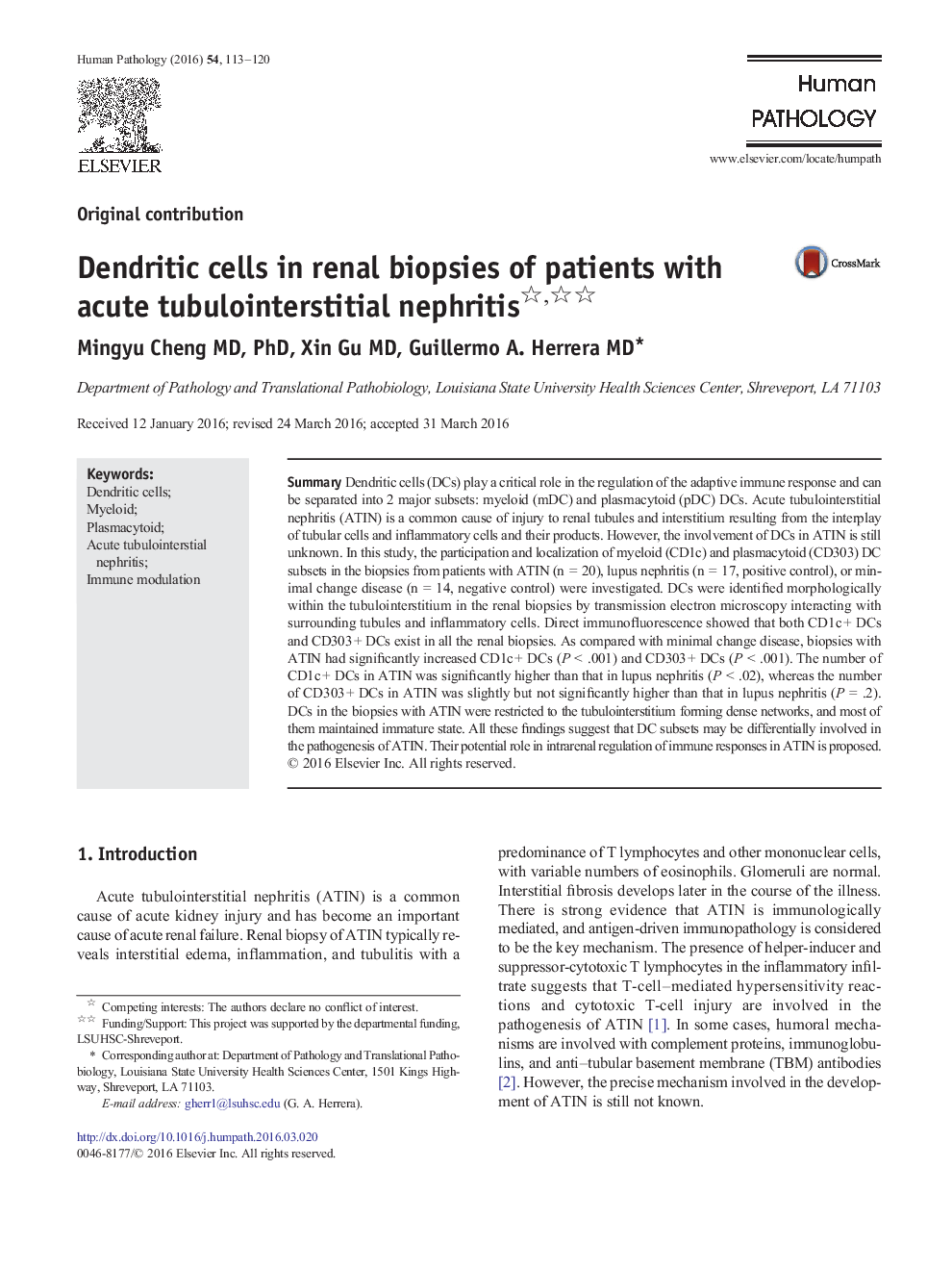| Article ID | Journal | Published Year | Pages | File Type |
|---|---|---|---|---|
| 6215426 | Human Pathology | 2016 | 8 Pages |
SummaryDendritic cells (DCs) play a critical role in the regulation of the adaptive immune response and can be separated into 2 major subsets: myeloid (mDC) and plasmacytoid (pDC) DCs. Acute tubulointerstitial nephritis (ATIN) is a common cause of injury to renal tubules and interstitium resulting from the interplay of tubular cells and inflammatory cells and their products. However, the involvement of DCs in ATIN is still unknown. In this study, the participation and localization of myeloid (CD1c) and plasmacytoid (CD303) DC subsets in the biopsies from patients with ATIN (n = 20), lupus nephritis (n = 17, positive control), or minimal change disease (n = 14, negative control) were investigated. DCs were identified morphologically within the tubulointerstitium in the renal biopsies by transmission electron microscopy interacting with surrounding tubules and inflammatory cells. Direct immunofluorescence showed that both CD1c + DCs and CD303 + DCs exist in all the renal biopsies. As compared with minimal change disease, biopsies with ATIN had significantly increased CD1c + DCs (P < .001) and CD303 + DCs (P < .001). The number of CD1c + DCs in ATIN was significantly higher than that in lupus nephritis (P < .02), whereas the number of CD303 + DCs in ATIN was slightly but not significantly higher than that in lupus nephritis (P = .2). DCs in the biopsies with ATIN were restricted to the tubulointerstitium forming dense networks, and most of them maintained immature state. All these findings suggest that DC subsets may be differentially involved in the pathogenesis of ATIN. Their potential role in intrarenal regulation of immune responses in ATIN is proposed.
